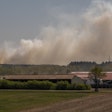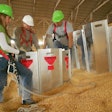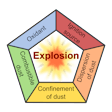Popularized in by the misspeak of former president George W. Bush, we're all familiar the following idiom, though I ask that you allow me to take liberties with it for the purposes of this column: "Cite me once, shame on me; cite me twice, shame on me and the entire enterprise." Thank you for humoring me, but this was the first thing that came to mind as Eric Conn, head of OSHA practice with law firm Epstein Becker Green, outlined OSHA's new strategy for adding new members to its least popular club: repeat violator.
Conn's presentation, "Mitigating Safety & Health Risks," at the National Grain & Feed Association's (NGFA) 2012 Annual Convention, an executive-level event held in Charleston, SC, featuring industry-relevant sessions hosted by high profile speakers, repeat violations have increased 225% since the Obama Administration's "new sheriff" transitioned to an enforcement-heavy strategy by shifting from a reactive to proactive philosophy. While the organization is known to target particular industries, within its scope of its local and national emphasis programs, the organization "hand selects past violators as targets for inspection." According to Conn, this means OSHA now treats workplaces within a corporate family as one workplace, meaning violations cited within a five-year span including different locations will be treated as repeat offenses as they are viewed as a systemic issue.
Yes, dangerous working conditions and violations of the law should be dealt with accordingly, but as it stands, once your organization has been added to the repeat violators list, it will be five years before for it can qualify for a clean history reduction; and if you're labeled as a severe violator, of which there currently is not a procedure in place for removal from this list.
Since "follow-ups and repeat violations have been [OSHA's] biggest weapon," Conn recommends companies challenge citations regardless of how minor the penalty.
"While the dollar amount may seem small and you may think it's easier just to pay it and move on, over the long-term, the issue may occur again say four years from now at a different location and you will become a repeat violator and will have to deal with those consequences," Conn explains. "
With the nuances of regulation are left up to the interpretation of the inspector, it's perfectly reasonable for the informed manager to take every precaution to prevent this falling to this cycle. Conn suggests companies – especially cooperatives and other multi-location grain operations address potential problems and increase their communication across the board.
Bottom line, avoid the shaming and cover your bases, enterprise wide.
To view Conn's violations check list, visit feedandgrain.com and enter ID Code: XXXX in search bar. Also, look for more insight into OSHA's emphasis on the grain industry in the June/July issue ofFeed & Grain.




















